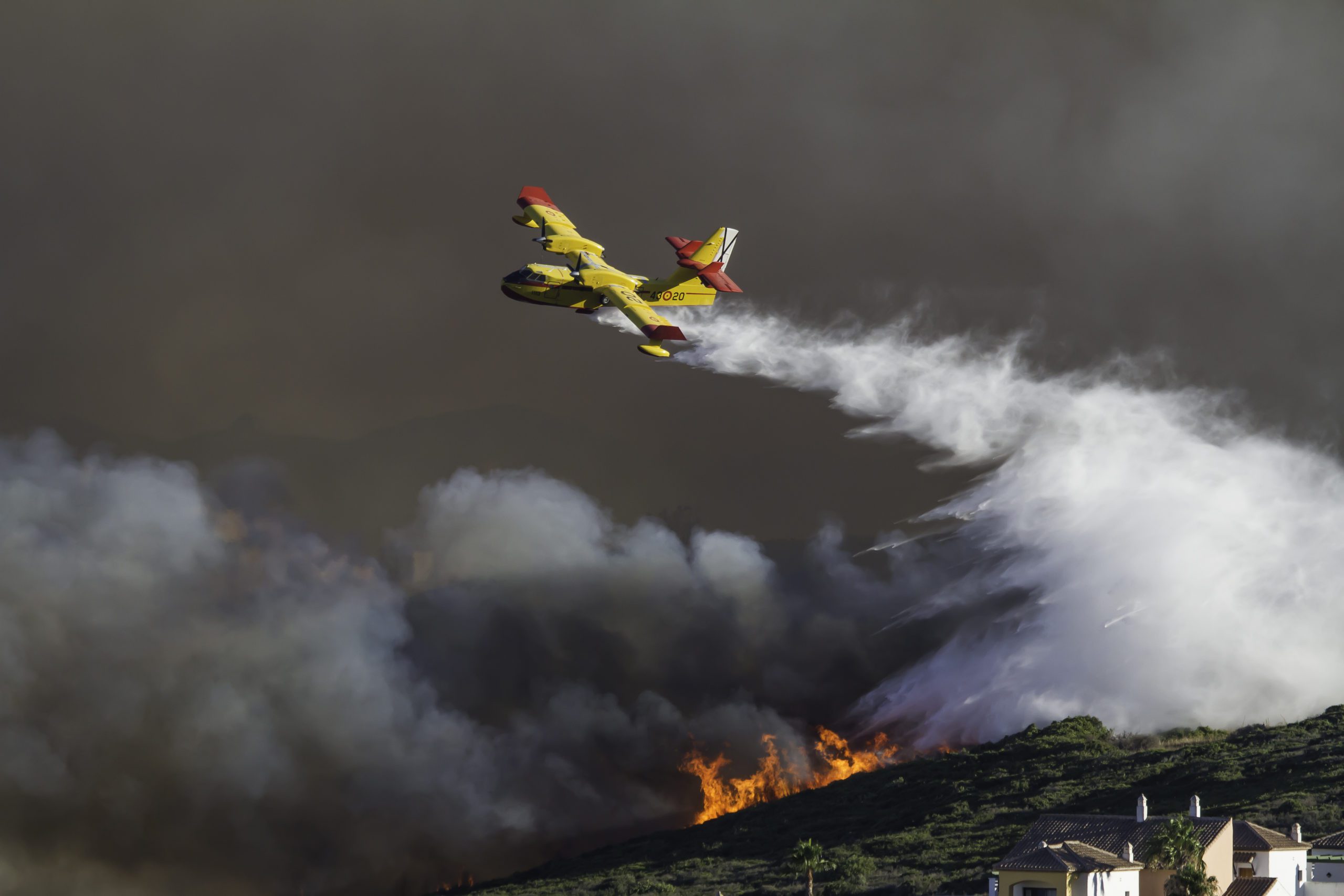
While southern Europe contends with severe drought and while wildfires rage in Spain, Portugal, and France, the UK is dealing with record-high temperatures. For the first time, temperatures there surpassed the 40C (104F) mark, the BBC reports.
The extreme heat which grips Europe has caused a multitude of fires on the continent. In southwestern France, in the Gironde region, 27,000 acres were ablaze, forcing the evacuation of about 32,000 people. On Monday, the town of Cazaux recorded 42.4C (108.3F), the hottest that has been observed since its weather station first opened in 1921.
Major cities in Western France, such as Nantes and Brest, also demolished previous heat records, while in Finistère, on the country’s western coastside, 700 acres of land were lost to the flames.
Spain, intimately familiar with wildfires, saw its central region Castile and Léon being engulfed by flames, herein joined by the northern region of Galicia. By Monday’s count—since the beginning of the heatwave on July 10th—22,000 hectares of woodland and scrub in Spain have burnt. So far, 510 have died from heat-related causes. Numbered among them was fireman Daniel Muñoz Varas, who succumbed after exposure to a fire at Losacio on Sunday.
Visiting one of the areas affected in Casas de Miravete on Monday, Spanish Prime Minister Pedro Sanchez urged public authorities to transform regional environmental policies into those coming from the state level. He went on to honour Muñoz’ memory, saying that vindicating that memory “is showing the pride of society as a whole.”
Meanwhile, in neighbouring Portugal, hundreds have perished, where sweltering heat further exacerbates a severe drought. Portugal’s Health Ministry said on Saturday that in the last seven days, 659 people passed due to the heatwave, most of them elderly. Last Thursday, it said that their health system faced a “particularly worrying” week and that some hospitals were overwhelmed.
A particularly mournful case is the one of an elderly couple who died Monday after their vehicle overturned as they fled wildfires in northern Portugal. The Friday before, a water bomber pilot, trying to contain a fire spreading, died when his aircraft crashed.
From July 7th to July 13th alone, Portugal registered 238 excess deaths due to the heatwave. On Thursday, the highest temperature in the country was recorded in the northern town of Pinhao at 47C (116.6F), just below the record.
In total, over 1,100 people in Southern Europe are believed to have died. Experts however say that the peak should have been reached early this week.
The UK meanwhile recorded its hottest-ever temperature (40.3C) in Coningsby, Lincolnshire on Tuesday. Late that afternoon, a number of fires broke out in areas around the capital. One major blaze in the village of Wennington, in east London, burned fields and set houses on fire. The UK’s previous record was 38.7C in Cambridge, according to a July 2019 measurement.
Belgium, the Netherlands, and Germany also saw temperatures soar, but these are expected to drop as the week progresses.
On Monday, the EU Commission had urged a battening down of the hatches since nearly half of Europe’s territory, including the UK, is “at risk” of drought. Its Joint Research Centre pointed out that the drought in much of Europe is “critical” as the “winter-spring precipitation deficit … was exacerbated by early heatwaves in May and June.” According to its report, the water supply may be “compromised” in the coming months.
For the Petersberg Climate Dialogue in Berlin, a forum for ministers to “put pressure on governments” for “climate action,” the timing could not be more ideal. As it concluded on Tuesday, its attendees are sure to use the aforementioned European case studies at the November COP27 climate talks in Egypt.
Some academic voices have criticisms as to where temperatures are mostly measured—especially when used in the promotion of zero-carbon agendas to combat climate change. Research by Canadian professor in environmental economics Ross McKitrick and others shows that about half of all land surface temperature measurements in use are taken near airport runways.
By virtue of these featuring heat-radiating tarmac and concrete, containing industrial buildings as well as being subject to constant superheated jet exhausts measuring hundreds of degrees centigrade, it is then little surprise these would show higher temperatures compared with measurements made by satellites and meteorological balloons.
